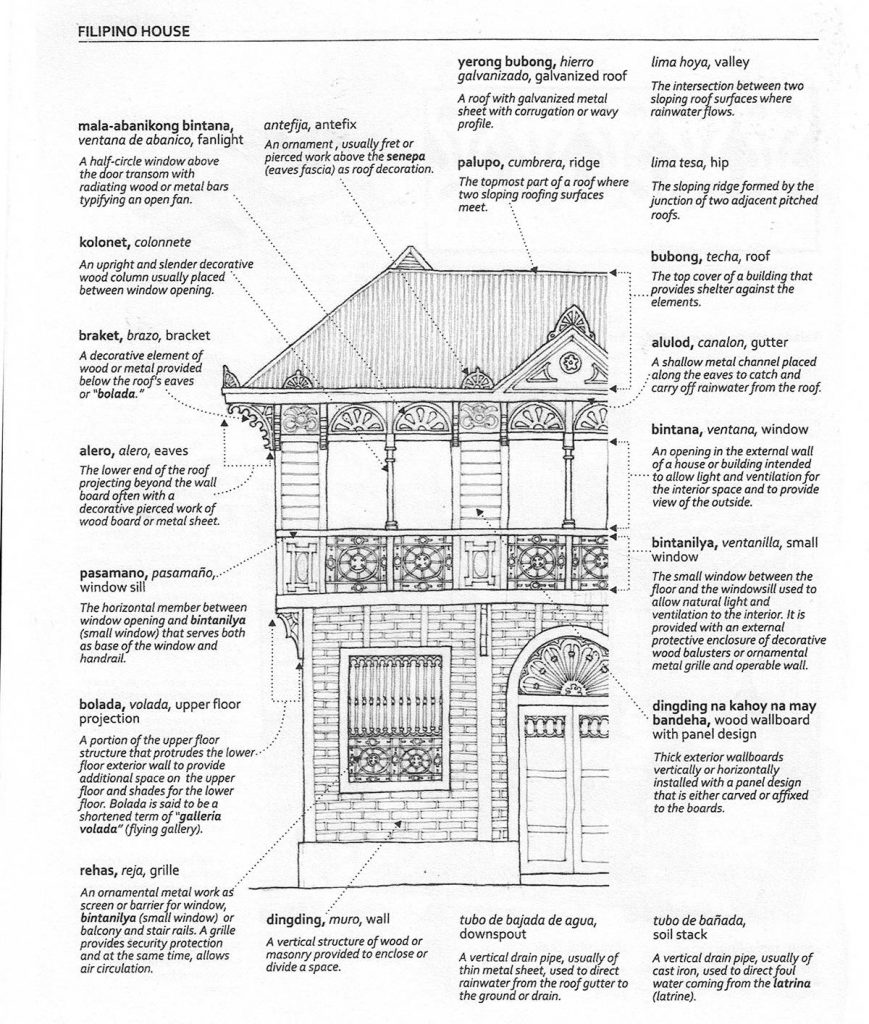Despite having been an architect for nearly four decades, I must confess that I am not quite familiar with the many local architectural terms, in part due to having studied architecture principally in English, but also because I worked mostly in an office environment, away from the construction sites and lingua franca of our skilled workers.
Last year, I came across a book titled: Diksiyonaryong Biswal ng Arkitekturang Filipino – A Visual Dictionary on Filipino Architecture authored by Architect Rino Fernandez, a UST Professor, former executive director of the United Architects of the Philippines (UAP) – Sentro ng Arkitekturang Filipino, and former vice head of the National Sub-committee on Architecture and Allied Arts (NCAAA) of the National Commission for Culture and the Arts (NCCA).
A bestseller and recipient of numerous awards such as the 2016 Gintong Aklat Award for Arts and Humanities, it contains rich vocabularies of both architectural and the built heritage from the First Societies (pre-Hispanic), to the Hispanic period, and to the American period, where Filipino, English and Spanish terminologies are matched with wonderfully hand illustrated parts of houses, buildings and spaces to make it simple and easy-to-understand.

Here are some of the more common terms found in the book. How many of these are you familiar with?
alero – eaves
alulod – gutter
balon – well
balwarte – bastion
bakod – fence
bantayog – monument
barandilya – balustrade
bintanilya – small window
bubong – roof
bulwagan – hall
ding-ding – wall
eskinita – alley
eskudo – coat of arms
haligi – footing
kalye – street
kalsada – road
kampana/batingaw – church bell
kisame – ceiling
kuta – fort
lapida – gravestone
libingan – cemetery/graveyard
linterna – lantern
medya-agwa – canopy
palaruan – playground
pasamano – window sill
sahig – floor
silid aralan – classroom
simbahan – church
soleras – floor joist
rehas – grille
retablo – altar piece
Just recently, Fernandez, together with Kristina Banzon, came out with another book Isinalarawang Introduksiyon sa Arkitekturang Filipino. For sure this is another interesting read on Filipino Architecture.
* * *
Henry L. Yap is an Architect, Fellow in Environmental Planner and Real Estate Management, and one of the Undersecretaries of the Department of Human Settlements and Urban Development.
Banner photo from United Architects of the Philippines Facebook page
